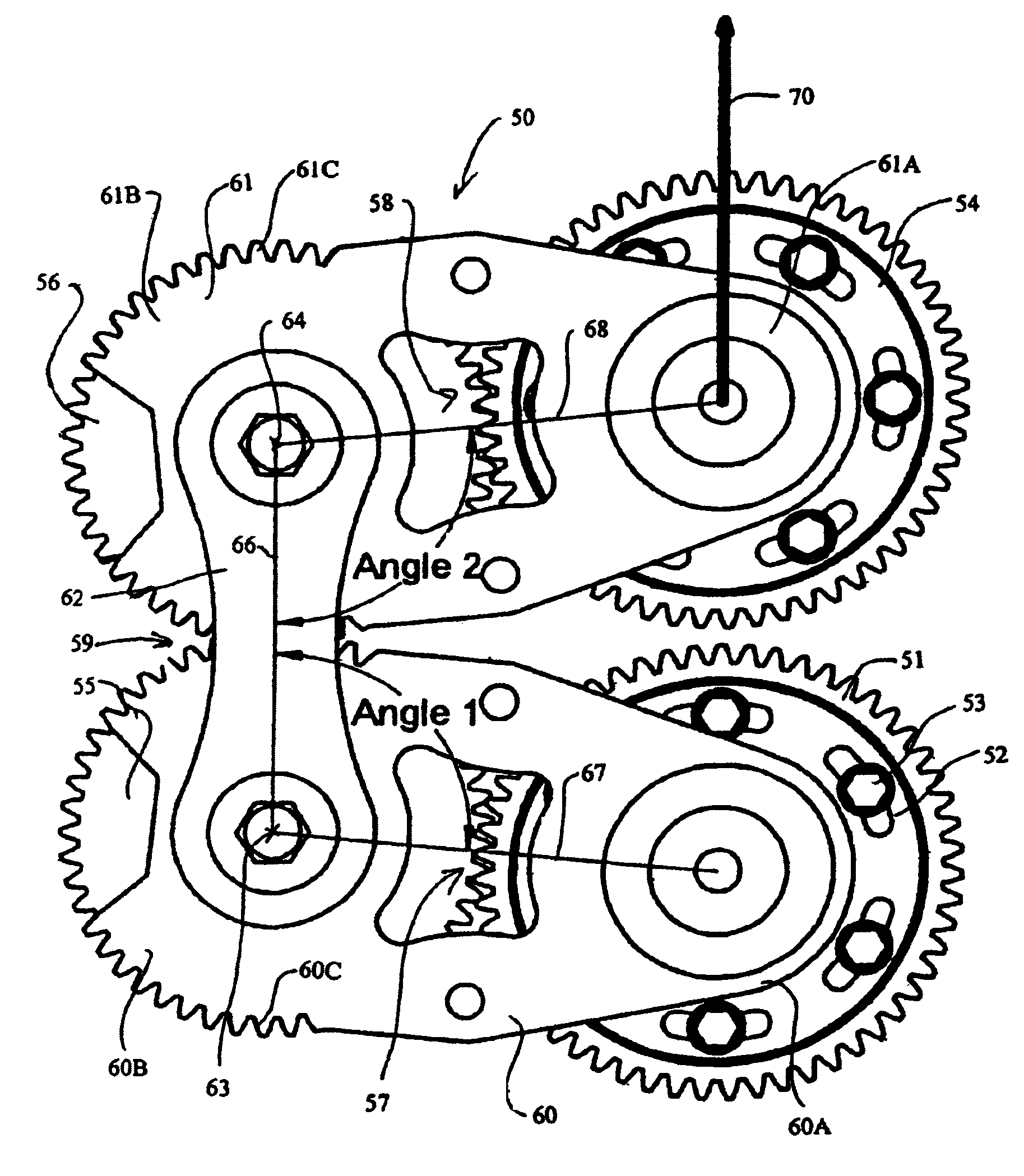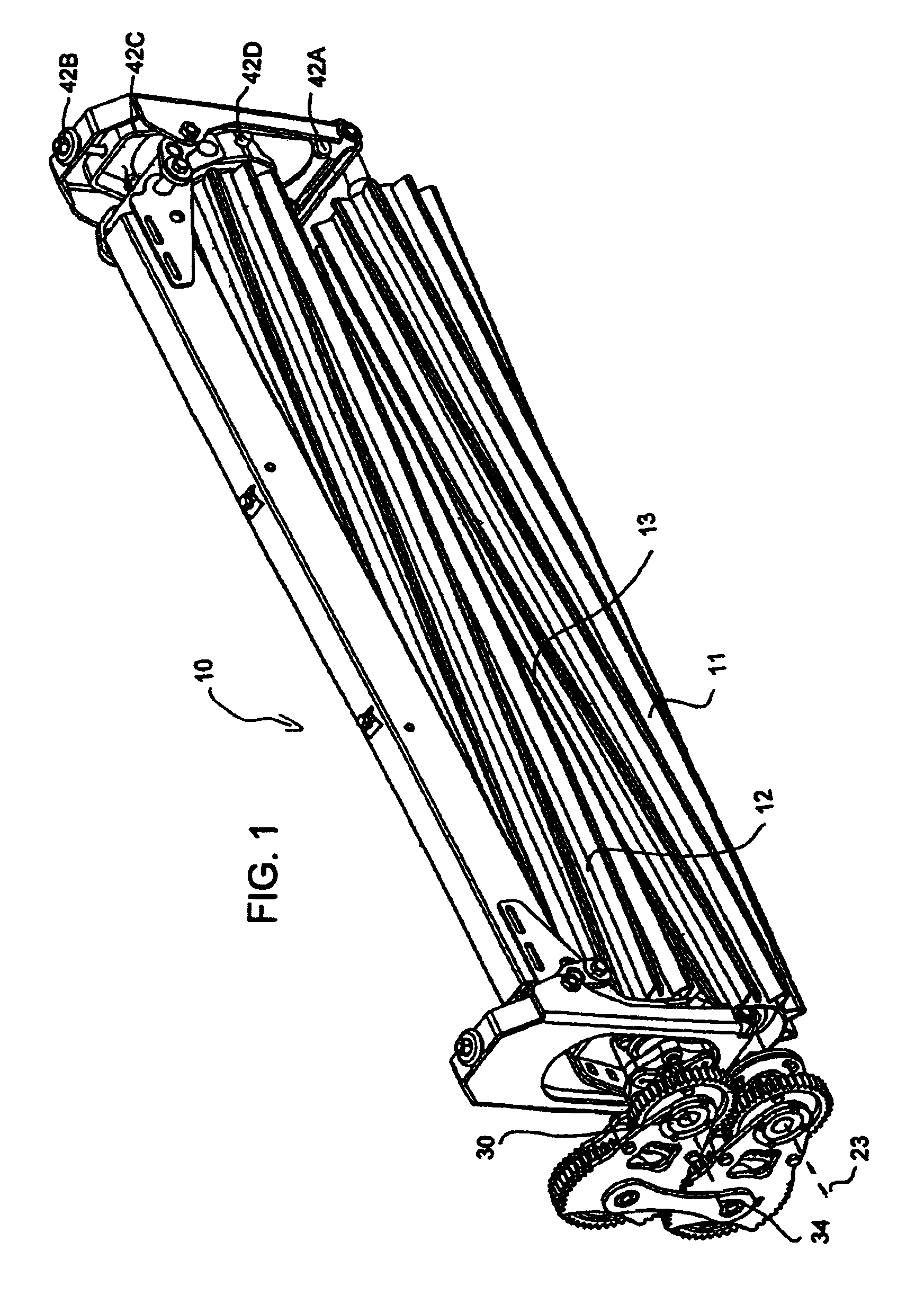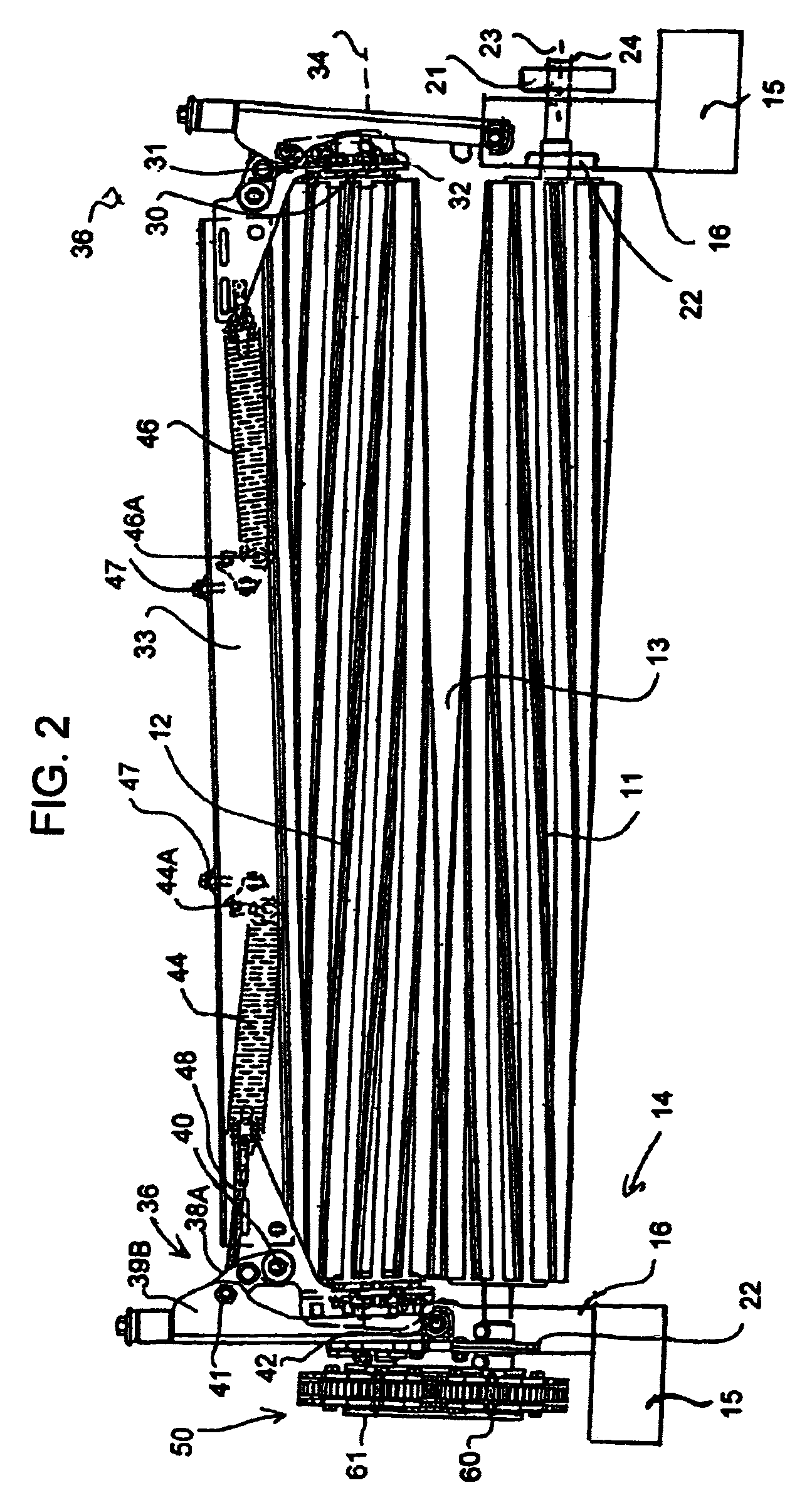Conditioning roller drive
a technology of roller drive and roller blade, which is applied in the field of conditioning roller drive, can solve the problems of increasing cost, cracking of the waxy surface of the crop stem, and high cost of gear box arrangement,
- Summary
- Abstract
- Description
- Claims
- Application Information
AI Technical Summary
Benefits of technology
Problems solved by technology
Method used
Image
Examples
Embodiment Construction
[0090]A forage conditioner 10 comprises a first bottom roll 11 and a second top roll 12 which meet in a central area 13 through which the crop material passes in a conditioning action. The crop conditioner is mounted on a crop harvesting machine 14 the only part of which is shown is the supporting leg 15 which extends from a main frame structure downwardly and forwardly to provide support for a back sheet and a table.
[0091]The construction and arrangement of conditioners of this general type on a crop harvesting machine, particularly a swather is well known to one skilled in the art so it is not necessary to describe in detail the cooperation between the conditioning assembly and the harvester itself.
[0092]In general, the bottom roll 11 is fixed relative to a support housing 16 which is in turn mounted on the leg 15 so that the crop passes over the bottom roller 11 while that roller remains fixed in place between the leg 15 and a corresponding leg at the opposite end of the rollers ...
PUM
 Login to View More
Login to View More Abstract
Description
Claims
Application Information
 Login to View More
Login to View More - R&D
- Intellectual Property
- Life Sciences
- Materials
- Tech Scout
- Unparalleled Data Quality
- Higher Quality Content
- 60% Fewer Hallucinations
Browse by: Latest US Patents, China's latest patents, Technical Efficacy Thesaurus, Application Domain, Technology Topic, Popular Technical Reports.
© 2025 PatSnap. All rights reserved.Legal|Privacy policy|Modern Slavery Act Transparency Statement|Sitemap|About US| Contact US: help@patsnap.com



